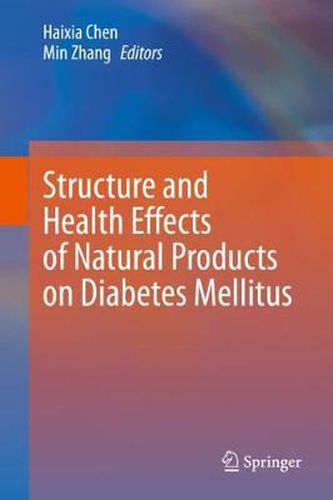Readings Newsletter
Become a Readings Member to make your shopping experience even easier.
Sign in or sign up for free!
You’re not far away from qualifying for FREE standard shipping within Australia
You’ve qualified for FREE standard shipping within Australia
The cart is loading…






This title is printed to order. This book may have been self-published. If so, we cannot guarantee the quality of the content. In the main most books will have gone through the editing process however some may not. We therefore suggest that you be aware of this before ordering this book. If in doubt check either the author or publisher’s details as we are unable to accept any returns unless they are faulty. Please contact us if you have any questions.
The purpose of this book is to introduce the classified chemical components of hypoglycemic compounds in natural products, summarize the recent research progress of natural products with hypoglycemic activity in the past 20 years, and provide the original analysis and development opinions of relevant scholars. Hypoglycemic compounds are to target diabetes mellitus, an important public health problem, one of four priority noncommunicable diseases (NCDs) targeted for action by world leaders. Diabetes mellitus is a common endocrine and metabolic disease, which not only causes physiological damage to patients’ kidneys, cardiovascular and cerebrovascular vessels, peripheral blood vessels, nerves and eyes, but also causes mental and psychological pressure to patients. Due to the evidence that traditional medicine and natural herbal formula have advantages in treating diabetes, natural products with hypoglycemic activity have been studied extensively in recent years and have been accepted by many scholars all over the world.
This book focuses on the progress on the study of the structure, hypoglycemic activities, structure-activity relationships and mechanism of a wide range of polysaccharides, flavonoids, saponins, alkaloids, terpenoids, polyphenols and other constituents. It will help students and researchers to understand current approaches and progress in the treatment of diabetes with natural products, which may also be beneficial to develop new hypoglycemic drugs.
$9.00 standard shipping within Australia
FREE standard shipping within Australia for orders over $100.00
Express & International shipping calculated at checkout
This title is printed to order. This book may have been self-published. If so, we cannot guarantee the quality of the content. In the main most books will have gone through the editing process however some may not. We therefore suggest that you be aware of this before ordering this book. If in doubt check either the author or publisher’s details as we are unable to accept any returns unless they are faulty. Please contact us if you have any questions.
The purpose of this book is to introduce the classified chemical components of hypoglycemic compounds in natural products, summarize the recent research progress of natural products with hypoglycemic activity in the past 20 years, and provide the original analysis and development opinions of relevant scholars. Hypoglycemic compounds are to target diabetes mellitus, an important public health problem, one of four priority noncommunicable diseases (NCDs) targeted for action by world leaders. Diabetes mellitus is a common endocrine and metabolic disease, which not only causes physiological damage to patients’ kidneys, cardiovascular and cerebrovascular vessels, peripheral blood vessels, nerves and eyes, but also causes mental and psychological pressure to patients. Due to the evidence that traditional medicine and natural herbal formula have advantages in treating diabetes, natural products with hypoglycemic activity have been studied extensively in recent years and have been accepted by many scholars all over the world.
This book focuses on the progress on the study of the structure, hypoglycemic activities, structure-activity relationships and mechanism of a wide range of polysaccharides, flavonoids, saponins, alkaloids, terpenoids, polyphenols and other constituents. It will help students and researchers to understand current approaches and progress in the treatment of diabetes with natural products, which may also be beneficial to develop new hypoglycemic drugs.